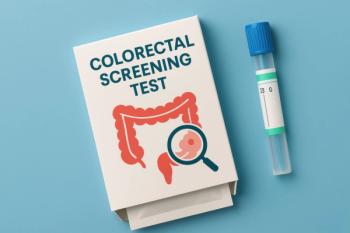
Comorbidities Linked to Emergency Colon Cancer Diagnoses, Study Finds
Key Takeaways
- Over one-third of colon cancer cases are diagnosed in emergency settings, often among patients with multiple chronic conditions, leading to higher short-term mortality.
- The study analyzed colorectal cancer cases from 2014 to 2020, focusing on diagnostic pathways and the impact of comorbidities and socioeconomic factors.
Patients with chronic conditions are less likely to be diagnosed via screening and face higher mortality when cancer is detected in emergency settings, according to one study.
More than one-third of colon cancer cases were diagnosed in emergency settings—particularly among patients with multiple chronic conditions, according to a study from Italy.1 These patients with
This retrospective, population-based cohort study is published in
“To our knowledge, the current study is one of the first in Italy to investigate the association of comorbidity burden and specific comorbidities with diagnostic routes for patients with CRC,” wrote the researchers of the study. “As chronic diseases and cancer incidence increase with age, a substantial proportion of patients diagnosed with cancer have preexisting comorbidities.”
As the global population ages, CRC risk continues to rise, making age a critical factor in screening and prevention strategies.2 Additionally, biological age may offer a more precise measure of CRC risk, especially among older adults.
The study analyzed CRC cases diagnosed between July 1, 2014, and December 31, 2020, using linked data from the cancer registry and administrative health records maintained by the Agency for Health Protection of Milan, Italy.1 The study included patients residing in the provinces of Milan and Lodi, with data analyzed from January 1 to October 1, 2024.
The researchers examined diagnostic pathways—emergency presentation, screening, and inpatient or outpatient visits—based on patient comorbidity status and socioeconomic characteristics, including age, sex, and deprivation index. Additionally, the researchers assessed the association between comorbidities and diagnostic routes, cancer stage at diagnosis, and short-term mortality at 30 days and 1 year, adjusting for relevant socioeconomic and clinical factors.
Among the 14,457 patients analyzed, 10,750 (74.4%) had colon cancer and 3,707 (25.6%) had rectal cancer. The diagnostic route was determined for 97.8% of colon cancer cases and 98.1% of rectal cancer cases. Comorbidities were present in 44.6% of patients with colon cancer and 57.6% of patients with rectal cancer. Emergency presentations accounted for 35.6% of colon and 22.6% of rectal cancer diagnoses, while screening detection occurred in only 8.4% and 9.5% of cases, respectively.
Among patients with colon cancer, emergency diagnosis was significantly associated with cerebrovascular disease (adjusted odds ratio [AOR], 1.50; 95% CI, 1.23-1.82), neurological disease (AOR, 1.67; 95% CI, 1.33-2.09), and having 3 or more comorbidities vs. none (AOR, 1.78; 95% CI, 1.47-2.16). In contrast, having 3 or more comorbidities was linked to lower odds of screening-detected colon cancer (AOR, 0.64; 95% CI, 0.45-0.91). Emergency diagnosis was also associated with substantially higher short-term mortality, including 30-day mortality (AOR, 4.84; 95% CI, 2.81-8.33) and 1-year mortality (AOR, 2.77; 95% CI, 2.17-3.53). The COVID-19 pandemic further increased the likelihood of emergency diagnosis compared to the prepandemic period (AOR, 1.32; 95% CI, 1.15-1.52).
However, the researchers acknowledged limitations. First, the study was limited by the absence of clinical data, including symptom information at diagnosis. Second, the algorithm assumed clinical activity within 6 months was cancer-related, which may not always be accurate. The study also reported associations rather than causal relationships. Furthermore, the data was limited from 2014 to 2020, excluding the full pandemic period.
Despite these limitations, the researchers believe the study suggests an association between comorbidities and a lower likelihood of screening detection, higher risk of emergency diagnosis, and higher mortality.
“Understanding differences in the likelihood of emergency presentation cancer diagnoses across countries can help identify approaches for improving the timely diagnosis of cancer and cancer outcomes,” wrote the researchers. “The routine collection and analysis of electronic health data hold relevant potential for conducting these analyses. This ongoing research is essential to adapt and optimize cancer care amid evolving health care challenges, particularly with aging populations and increasing multimorbidity.”
References
1. Pennisi F, Buzzoni C, Russo AG, et al. Comorbidities, socioeconomic status, and colorectal cancer diagnostic route. JAMA Netw Open. 2025;8(5):e258867. doi:10.1001/jamanetworkopen.2025.8867
2. Steinzor P. Racial disparities exist in colorectal cancer deaths. AJMC®. May 8, 2025. Accessed May 28, 2025.
Newsletter
Stay ahead of policy, cost, and value—subscribe to AJMC for expert insights at the intersection of clinical care and health economics.













































